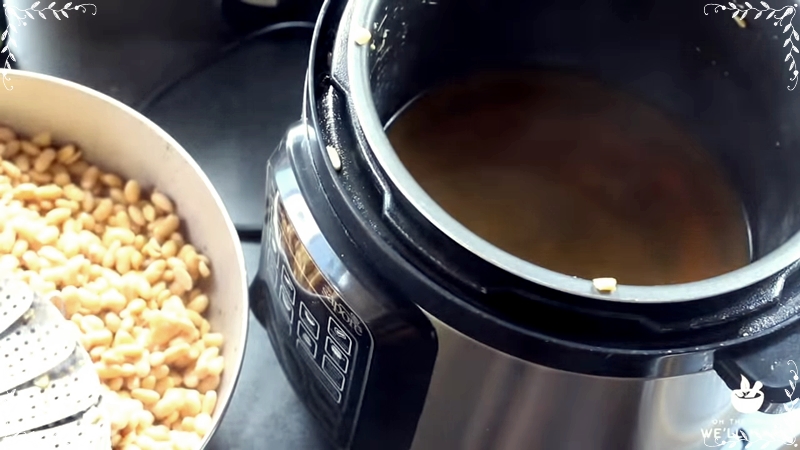ប្រវត្តិ ទឹកស៊ីអ៊ីវ(១)--ប្រវត្តិ ទឹកស៊ីអ៊ីវ(២)- ប្រវត្តិ ទឹកស៊ីអ៊ីវ(៣)
ទឹកស៊ីអ៊ីវ មានប្រើតាំងពីរជ្ជកាលអាណាចក្រ ហាន គឺមានអាយុប្រមាណជា ២,២០០ឆ្នាំកន្លងមក។ ទឹកស៊ីអ៊ីវ មានប្រើក្នុងប្រទេសចិន ជប៉ុន កូរ៉េ អាមេរិក អ៊ីរ៉ុប ភូមារ ថៃ វៀតណាម ឡាវ ម៉ាឡេ ឥណ្ឌូនេស៊ី....។ ភាសាដែលទាក់ទងពាក្យ ទឹកស៊ីអ៊ីវ រួមមាន៖
ទឹកស៊ីអ៊ីវ មានប្រើតាំងពីរជ្ជកាលអាណាចក្រ ហាន គឺមានអាយុប្រមាណជា ២,២០០ឆ្នាំកន្លងមក។ ទឹកស៊ីអ៊ីវ មានប្រើក្នុងប្រទេសចិន ជប៉ុន កូរ៉េ អាមេរិក អ៊ីរ៉ុប ភូមារ ថៃ វៀតណាម ឡាវ ម៉ាឡេ ឥណ្ឌូនេស៊ី....។ ភាសាដែលទាក់ទងពាក្យ ទឹកស៊ីអ៊ីវ រួមមាន៖
- ភាសាអគ្លេស (Soy Sauce)
- ភាសាខ្មែរ ទឹកស៊ីអ៊ីវ
- ភាសាចិន 酱油 ជៀង យ៉ូ
- ភាសាចិនកង់តុង តៃវ៉ាន់ 豉油 ឈី អ៊ៀវ Chǐ yóu
- ភាសាភូមារ ပဲငံပြာရည်
- ភាសាវៀតណាម xì dầu or nước tương ស៊ី ហ្សូ ឬ នឿក ឌឿង
- ភាសាថៃ ซีอิ๊ว (Si Iw ស៊ីអ៊ីវ)
- ភាសាជប៉ុន しょうゆ ជ យឺត
- ភាសាម៉ាឡេ kicap
- ភាសាហ្វីលីពីន toyo
Soy sauce (also called soya sauce in British English)[1][2] is a condiment made from a fermented paste of soybeans, roasted grain, brine, and Aspergillus oryzae or Aspergillus sojae molds.[3] Soy sauce in its current form began about 2200 years ago in Western Han dynasty of ancient China[4][5][6][7] and spread throughout East and Southeast Asia where it is used in cooking and as a condiment (especially atop plain rice)
China
Soy sauce (酱油) is considered almost as old as soy paste — a type of fermented paste (Jiang, 酱) obtained from soybeans — which had appeared in Western Han dynasty and was listed in the bamboo slips found in the archaeological site Mawangdui.[6][5] There are several precursors of soy sauce that are associated products with soy paste. Among them the earliest one is Qing Jiang (清酱) that had appeared in AD 40 and was listed in Si Min Yue Ling (四民月令).[7] Others are Jiang Qing (酱清), Chi Zhi (豉汁) and Chi Qing (豉清) which are recorded in Qi Min Yao Shu (齐民要术) in AD 540.[7] By the time of Song dynasty, the term soy sauce (酱油) had become the accepted name for the liquid condiment,[7] which are documented in two books: Shan Jia Qing Gong (山家清供)[9] and Pu Jiang Wu Shi Zhong Kui Lu (浦江吴氏中馈录)[10] in Song dynasty.


























No comments:
Post a Comment